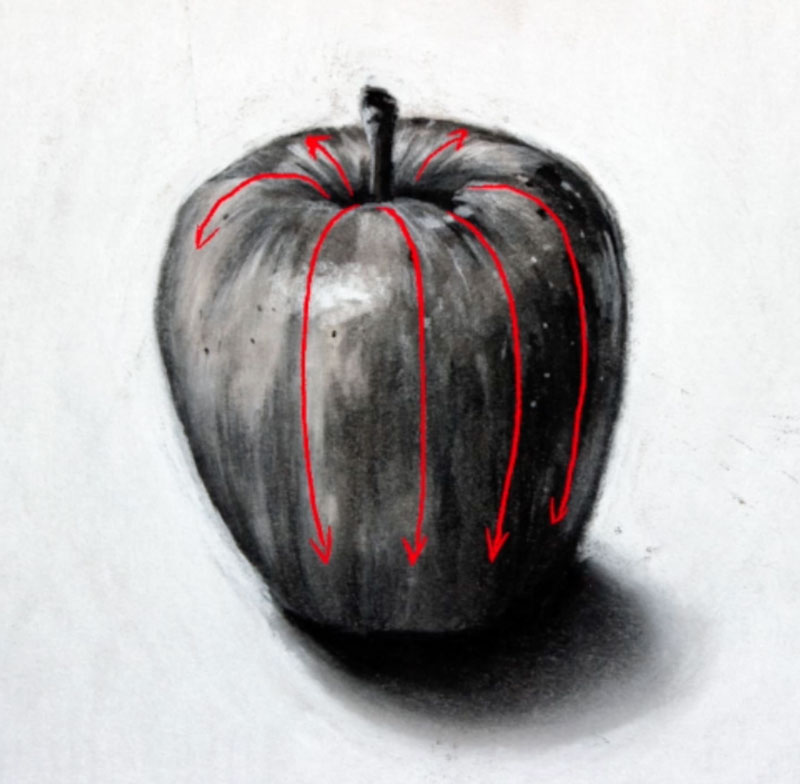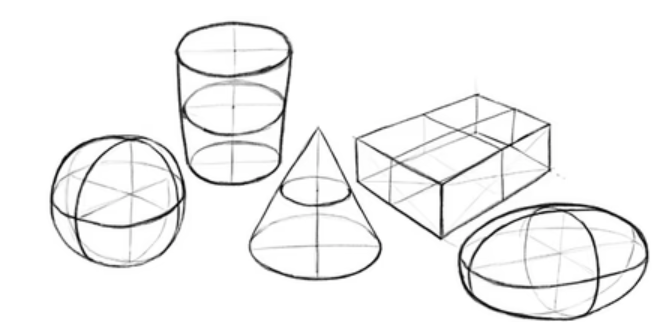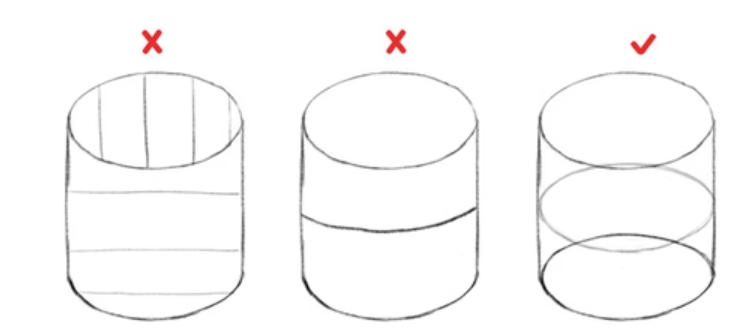Lesson : Contour and cross-contour(with activity)
What is contour drawing in art?
The focus of contour drawing is the outlined shape of the subject rather than the details. Contours are used to depict the mass and volume using simple lines. The French word contour means "outline".

In this drawing, we can see the contours of the mushroom, but it still looks flat. We need to add some inner contour lines to help us understand what we see better.
Not all contours exist along the edges of a subject; it includes changes of plane within the form.

Once we add the inner contour lines, the drawing makes more sense.
To give these mushrooms more dimensionality, we need to add cross contours.

The Concept of Cross Contour Lines
Cross contour lines flow over the form of the object. A good way to understand this concept is to take your finger and move it slowly over the surface of an object, following a straight path. Watch your finger as you move it and try to imagine that it is leaving a line as it moves. Your finger will move and change direction according to the form.


There is practical reason for understanding cross contour lines. This concept is important in communicating form in your drawings and paintings and can help you make smart decisions regarding the direction of your stroke - whether it be with a pencil, pen, or brush.
While cross contour lines can flow in generally any direction, in most circumstances, you'll want to consider lines that flow vertically or horizontally around the form.
Here are two things to keep in mind when you use contour lines.
1. Ask yourself what does this object look like?
A sphere, cylinder, cone, ellipsoid or box?

Let's take a circle and draw straight contour lines. It turns it flat.
What if we drew curved lines? This makes it look like a curved dish.

But when we curve the lines across the form, we can create the illusion of a sphere with just a few lines. The last drawing looks like a ball and is much more convincing than the others.
2. Imagine the form as transparent and draw through it
Let's try the same thing with a cylinder.
With straight lines, the cylinder looks flat.
Some beginners might then try to create a curve without understanding its reasoning. This line also looks wrong because it is too shallow.

We need to imagine the form as transparent and draw through it. Imagine that your line goes through the surface across to the other side.
Activity: Cross-Contour Drawing of an Object
Choose an Object: Select a simple object, such as an apple, or any item with a clear shape and surface texture.
Observation: Take a few minutes to closely observe your object. Pay attention to its curves, shapes, and how light interacts with its surface.
Draw the Outline: Lightly sketch the basic shape of your object on the paper, establishing its general proportions.
Cross-Contour Lines: Begin drawing curved lines that follow the form of the object, moving across its surface. These lines should wrap around the object, helping to define its 3D shape.
Add Details: As you continue with the cross-contour lines, observe how they change direction based on the object’s surface. Add more lines as necessary to capture the volume, texture, and depth of the object.
